Home >Web Front-end >JS Tutorial >Using GruntJS to build a Web program and merging and compressing it_node.js
Using GruntJS to build a Web program and merging and compressing it_node.js
- WBOYOriginal
- 2016-05-16 16:45:481572browse
The steps are as follows:
1. Create a new project Bejs
2. Create a new file package.json
3. Create a new file Gruntfile.js
4. Execute the grunt task from the command line
1. Create a new project Bejs
The source code is placed under src. This directory has two subdirectories, asset and js. js decentralizes selector.js and ajax.js. In the previous article, we have already talked about how to merge and compress them. This article only focuses on the asset directory, which contains some pictures and css files. After a while, the two css resources reset.css and style.css will be merged and compressed into the dest/asset directory. A merged version all.css and a compressed version all-min.css.

2. Create a new package.json
Put package.json in the root directory. Its meaning has been introduced in the previous article. The current project structure is as follows
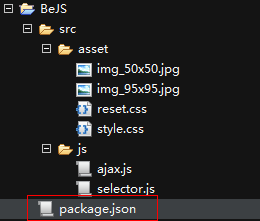
The content of package.json must comply with JSON syntax specifications, as follows
{
"name": "BeJS",
"version": "0.1.0",
"devDependencies": {
"grunt": "~0.4.0",
"grunt-contrib-concat": "~0.1. 1",
"grunt-css": ">0.0.0"
}
}
grunt-contrib-concat has been introduced in the previous article, grunt -css is the plugin to be used in this article.
At this point, open the command line tool and enter the project root directory, type the following command: npm install
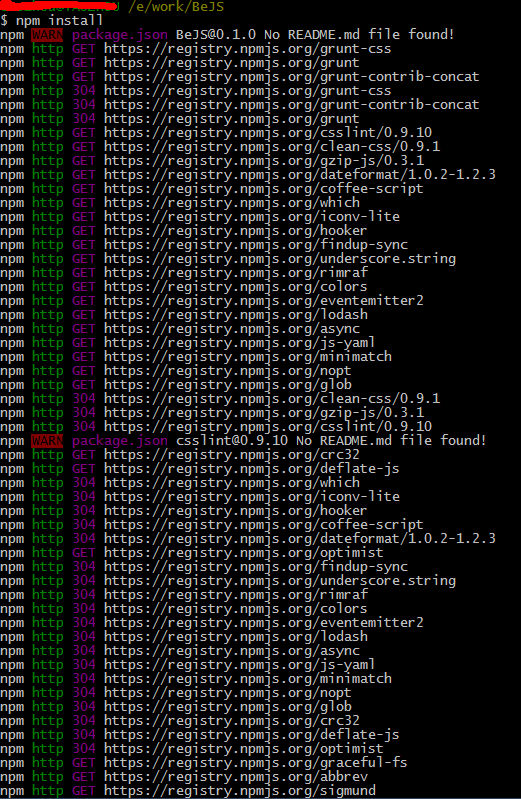
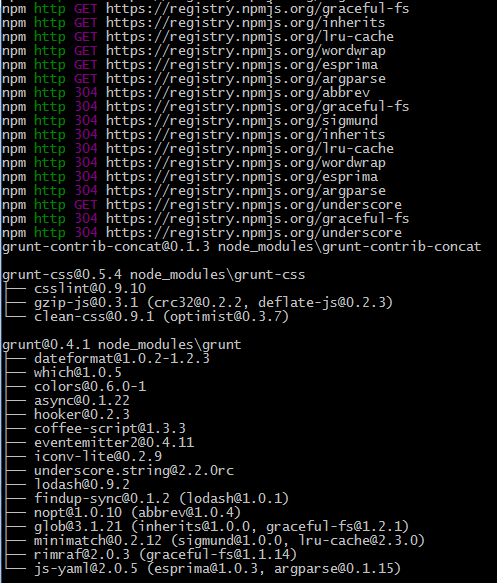
Looking at the root directory, we found that there is an additional node_modules directory, which contains four subdirectories, as shown in the picture
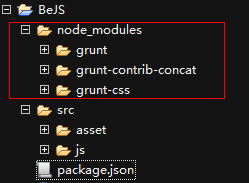
3. Create a new file Gruntfile.js
Gruntfile.js is also placed in the project root directory. Almost all tasks are defined in this file. It is an ordinary js file, and any js code can be written in it. Not limited to JSON. Like package.json, it must be submitted to svn or git like the source code.
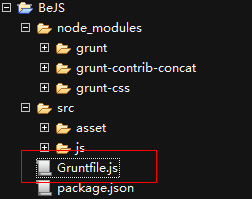
The source code is as follows
module.exports = function(grunt ) {
// Configuration
grunt.initConfig({
pkg : grunt.file.readJSON('package.json'),
concat : {
css : {
src : ['src/asset/*.css'],
dest: 'dest/asset/all.css'
}
},
cssmin: {
css: {
src: 'dest/asset/all.css',
dest: 'dest/asset/all-min.css'
}
});
// Loading concat and css plug-ins, respectively for merging and compression
grunt.loadNpmTasks('grunt-contrib-concat');
grunt.loadNpmTasks('grunt-css');
// Default task
grunt.registerTask('default', ['concat', 'cssmin']);
};
Open the command line, enter the project root directory, and type grunt

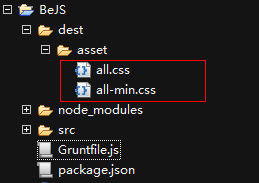
Related articles
See more- An in-depth analysis of the Bootstrap list group component
- Detailed explanation of JavaScript function currying
- Complete example of JS password generation and strength detection (with demo source code download)
- Angularjs integrates WeChat UI (weui)
- How to quickly switch between Traditional Chinese and Simplified Chinese with JavaScript and the trick for websites to support switching between Simplified and Traditional Chinese_javascript skills

